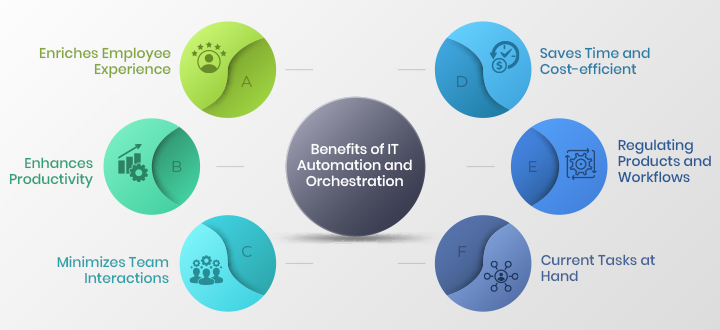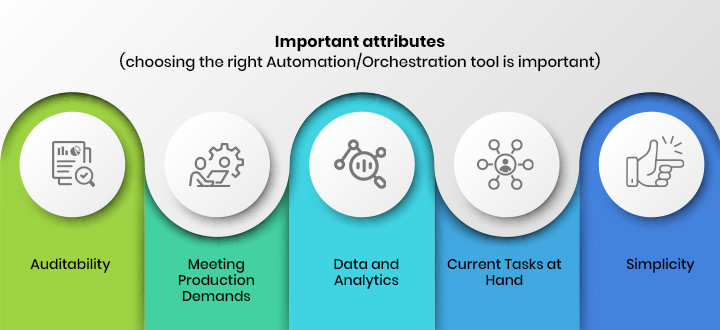

ACL Digital
Understanding the Difference between IT Automation and Orchestration
The distinction between IT automation and orchestration is primarily in the idea and tooling. Theoretically, automation can be thought-out to be a subgroup of orchestration. However, orchestration indicates multiple moving parts, whereas automation typically refers to a singular task or a minor number of strongly related projects. Orchestration runs on a top level and is expected to make specific decisions on changing conditions and needs.
Whether your data and applications are in the cloud or are in-house on-premises, IT automation and orchestration will make intricate business processes run without a hitch. No matter what IT strategy you adopt, it will help you manage more workloads. Orchestration is automating multiple tasks simultaneously; it is automation not of a lone task but an entire IT-driven procedure. In simpler terms, both denote things that happen without your direct intervention, but the results and the tools used to achieve them.
You might consider each separate function on its own to understand the differences between them.
What is IT Automation?
When executed wisely, automation makes typically high cost, extended manual procedures even more dependable and efficient. In the IT industry, it is feasible to automate tasks and processes. From integration to application deployment, service tickets generation and securing endpoints for both on-premises and cloud projects.
What is Orchestration?
Orchestration is like overseeing or controlling an extensive network or virtual ecosystem. Coordinating the scheduling and integration of automated procedures between complicated distributed systems and services – whether on-premises or in the cloud-modernizes repeated processes, operations, and interconnected workloads. Utilizing the modern-day orchestration tools, one can easily automate the coordination and management of intricate computer systems, direct automated processes to assist large workflows, and middleware and services within your computing ecosystem.
Use Cases for IT Automation and Orchestration
Orchestration makes good use of several tasks that are automated to implement a large workflow or process. These could cover numerous functions that are automated and possibly involve multiple systems.
Today, business enterprises understand that the shorter the time-to-market, the more likely they would help attain success. For IT companies, the primary use cases for orchestration involve:
- Data analytics
- Handling many servers and applications
- Speedier software development
- Batch processing routine transactions
Let’s look at an example: Entering a code manually by a software developer creates the risk of human errors. Though it is just the initial testing stage, the developer spends precious time fixing unwanted mistakes. We can reduce this risk in live environments by orchestrating the additional code by automating specific tasks. However, it also helps the efficiency by not entering the wrong code.
With automated software updations and backups, companies and professionals alike can ensure that the security of their systems is secure even without the technical information required for manual updates and backups. The benefits include improved security with modernized applications and software. Also, data recovery is much faster and saves time considerably.
Let’s Take a Look at the Benefits of Automation and Orchestration
Automating an individual task might not make a big difference, but it might make your customers aware that some process has sped up a little bit. However, when automation is developed into a sequence of workflows and processes, which are automated to run automatically, there can be innumerable benefits. They are:

Enriches Employee Experience
Professionals and employees who invest time on thoughtful, challenging, and creative assignments, not just automated plug and play tasks, are more likely to appreciate their work ecosystem.
Enhances Productivity
As an alternative to using human power on repetitive tasks, you can work on projects that involve skills, human thoughts, and decision making.
Minimizes Team Interactions
Team alliance is beneficial and worthwhile. However, it can create friction to the processes and projects. Orchestrating specific workflows and processes can reduce this friction between teams.
Saves Time and Cost-efficient
You might reduce overall IT costs or plan to use the budget towards innovation and brand-new projects.
Regulating Products and Workflows
Regulating processes and products across different fields means your workflows, processes, and products are reliable and consistent—and more often your organization will be portrayed in this way, too.
Reduction of Errors
Helps in creating and executing predictable, repeatable processes that can be automated. Also, this helps in enhancing the overall processes while minimizing unnecessary escalations.
Choosing the Right Automation/Orchestration Tools is Important
As orchestration is a complicated task, several tools will help you achieve orchestrations without hassles. You need to take into account the tools that are ideal and consider these aspects:

Auditability
Do your existing tools have the capacity to produce and support an audit trail that many industries need for compliance?
Meeting Production Demands
Do you have the necessary tools to handle the ups and downs of production as the peaks demand?
Data and Analytics
Can your existing tooling handle the processing requests? One specific user shared his experience of how his organization acquired three more companies, but with the right tools, they hardly experienced any loss of data or outages.
Current Tasks at Hand
Different tools are orchestrating IT infrastructure workflows or software development workflows. Consider the right tools for multiple tasks.
Simplicity
It is too simple to handle or just enough for your requirement?
Using the Automation vs Orchestration Experience
Jointly, automation and orchestration can help boost productivity, decrease IT costs, and free up personnel effort towards strategic interests and goals. Nevertheless, choosing the right tools with both takes time and considerable effort. That’s one reason why some companies decide to use ACL Digital’s Cloud Orchestration solutions – it is time-saving and bypasses the necessity to make capital investments in automation and orchestration tools.
For any clarifications or further assistance on automation and orchestration strategy, contact the experts at ACL Digital.




